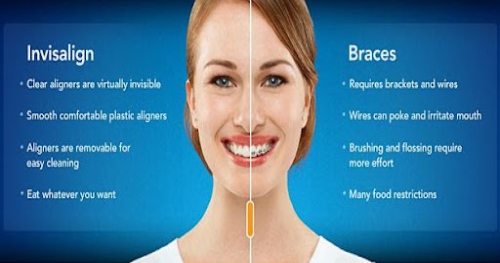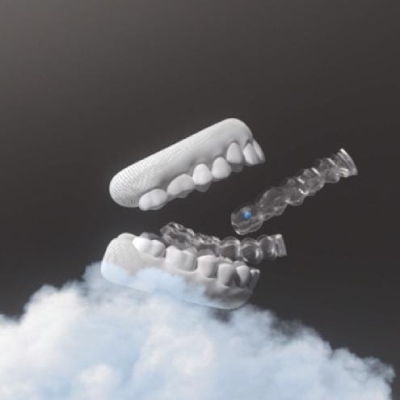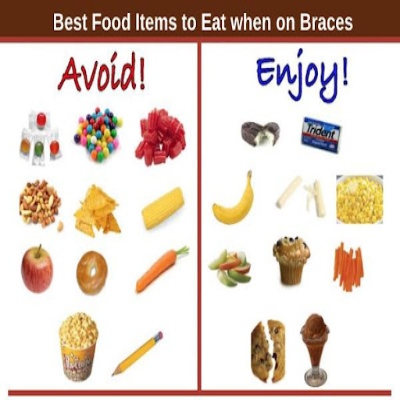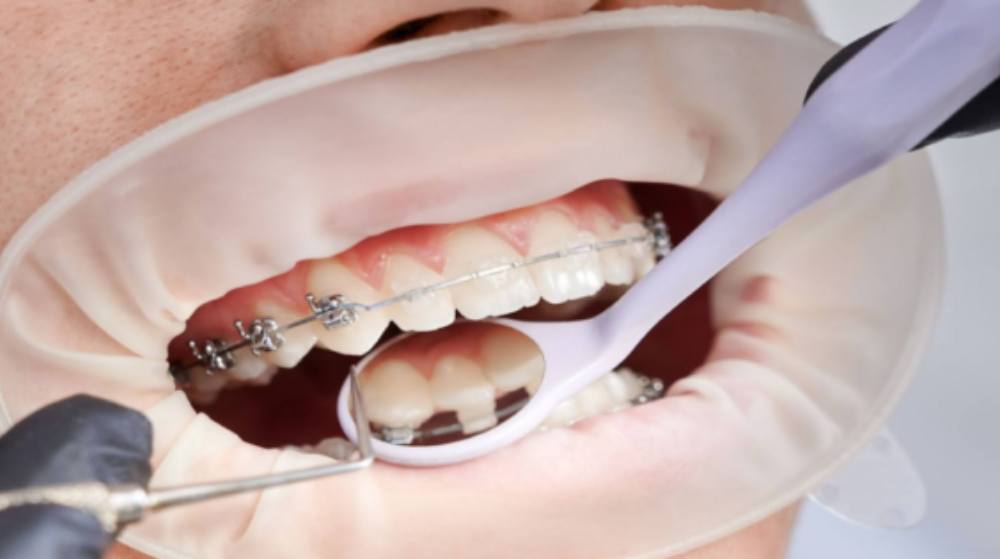Know why your child should opt for Invisalign Teen over Fixed Braces?
When you first find out that your child’s permanent teeth are coming in crooked, your first thought is probably about getting them braces. Though people have been looking for ways to improve their smiles for millennia, orthodontic braces as we know them have been around in some form since the late 1800s.
Everyone knows someone who had braces as a kid, and for good reasons — they work. But you probably also know that there have been great advancements in the world of orthodontics that give you and your child more options. You may have already heard of Invisalign and Invisalign Teen as an alternative to braces, but you might not be exactly sure how the two corrective methods stack up to each other.
Is Invisalign better than braces? Are braces better than Invisalign? We break down the critical differences between braces and Invisalign to help you evaluate which is best for your child.

Invisalign vs. Braces: How Do They Work?
If you haven’t had braces before, the way they actually work may be a bit of a mystery. These quick definitions of each treatment type will set you up for a better comparison of the two.
Braces: With conventional braces, metal brackets are bonded to the enamel of every tooth. The orthodontist then maneuvers a metal archwire between each bracket that is connected to the brackets by colorful elastic O-rings (this is where you get to pick the fun colors!). You can also opt for clear braces that match your natural teeth color and are less noticable. The archwire can then be adjusted to pull teeth back to a better position over time.
Invisalign: Clear aligners are made using a 3D image of the patient’s mouth. The patient receives a succession of progressively different clear trays that gently move the teeth less than a millimeter. Each tray guides the tooth into a better position than the previous tray. And each individual tray is worn for two weeks before moving onto the next tray. Invisalign trays are easy to put on and to remove.
So, which is better? Invisalign or braces? It depends on several factors which we’ll explore in depth.
Emotional Differences
The most glaring difference between traditional Braces vs. Invisalign is the emotional component. The idea of having wire bands and brackets attached to the teeth on a semi-permanent basis is enough to give any adult anxiety, and kids nearing the right age for orthodontic intervention are generally more concerned about their social status than the average adult.
Some kids love the idea of conventional metal braces because they get to pick out their braces’ colors every time they go in for an orthodontic appointment. Others, however, would rather not have such noticeable braces on their teeth.
Because Invisalign is much harder to detect on sight, kids tend to spend less time feeling self-conscious about their treatment if esthetics are of concern. The possibility of anxiety and self-esteem issues linked to conventional metal braces is usually the primary reason parents and kids look into Invisalign instead of braces.
Caring for Clear Aligners vs. Metal Braces
It’s not always easy to get your kids to take care of their stuff, and that applies to both braces and clear aligners.
Clear aligners, on the other hand, require practically no maintenance by comparison. When it’s time to chow down, teens can pop out the Invisalign tray and eat their fill of a variety of foods without any of the strain or discomfort that can accompany eating with braces. When they’re finished, they can brush their teeth as usual and pop the alignment tray back in. The disruption to your teen’s habits is minimal, which is ideal for kids who may be on the less responsible end of the spectrum when it comes to diet. Keep in mind that eating with Invisalign trays still in the mouth is a big no-no. Not only will it gunk up the trays, but there is also a higher risk of cavities, as food can get stuck underneath. An Invisalign patient must always remove their trays prior to eating and drinking (except for water).
Additionally, since they are removable, teens need to be on-board with wearing them the appropriate amount of time during the day. It’s very easy for patients to remove them when the teeth get a bit sore or for social engagements, and then forget to put them back in. This is an obvious problem that can slow or even stop correction.

Although braces come with upkeep requirements that some teens might not be able to follow well. The braces, wires and rubber bands included in this form of treatment can easily attract bits of food as well as plaque. If your teen doesn’t keep up with brushing and flossing after every meal, they can end up with stained teeth, or even an increased risk of tooth decay and/or gum disease. Needless to say, that kind of visual blemish partially defeats the purpose of braces in the first place.

Flossing and brushing with braces is a bit of a complex task. Flossing, in particular, requires some dexterity and patience for a teen to thread the floss through the small space between the main arch wire and the part of the tooth that’s closest to the gums. Brushing should be done with a soft toothbrush in combination with a Interdental brush, also known as a proxabrush. This specially-designed brush makes it possible to clean between two braces. Teens with braces should also avoid a relatively wide variety of foods, including those that are
Your teen will also have to avoid certain foods that require biting into like carrots, apples, and corn on the cob. It can be incredibly frustrating for some teens to have to think about every single thing food item they put in their mouth, giving metal braces a relatively steep learning curve. Most often, teens will have to modify how they eat their favorite foods by cutting food into smaller bite-sized pieces prior to eating.

Making the Next Move
When choosing between Invisalign and braces for your teen, the first step is to consult with an orthodontist to go over your options for treatment and financing. Choosing an orthodontic treatment for your child is an investment in a healthy and happy future, so picking the right orthodontist is essential.
At Smilex International Dental Centre, we take pride in providing traditional braces (both metal and ceramic) and Clear aligner (Invisalign Teen) treatments in a teen-friendly environment. Choosing Best Dental Clinic and Best Orthodontist in Pune reduces your teen’s stress and discomfort during any type of treatment, including Braces and Invisalign.
If you are looking for the Best Orthodontist in Pune, come to Smilex International Dental Centre. Our dedicated team has the expertise and compassion to make orthodontic treatment less of a headache for both you and your child.
If you’re ready to take the next step in getting braces or Clear aligners (Invisalign Teen) for your child, request a orthodontic consultation appointment at Smilex International Dental Centre with one of the Best Orthodontists in Pune. If you have more questions about our treatments, feel free to contact us at any time. We’re always happy to explain how we go above and beyond for your child’s dental health.




